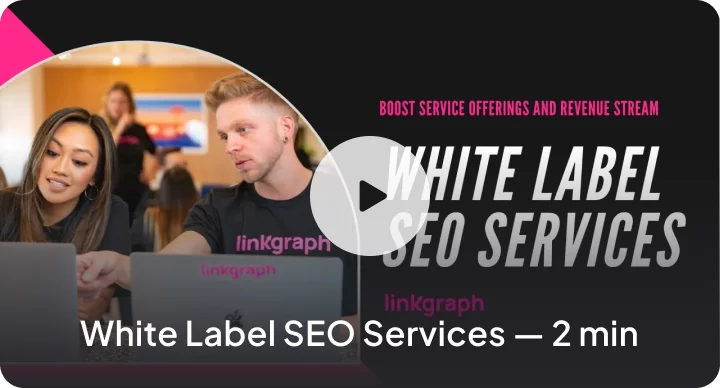Targeted Email Marketing 101: A Beginner’s Guide
With each day, it seems as though a new digital marketing platform promises to revolutionize the way you reach consumers. From chatbots and paid ads to social […]
With each day, it seems as though a new digital marketing platform promises to revolutionize the way you reach consumers. From chatbots and paid ads to social media and influencers, there are plenty of ways to reach your customers; however, with such a wealth of options, the question becomes which method (or methods) are actually effective.
The latest outreach methods certainly have their pros; however, we often forget one of the oldest yet most effective marketing channels: email. When used correctly, targeted email marketing can be an easy and accessible digital marketing approach for anyone trying to grow their business.
Not sure how to get started with targeted email marketing? Keep reading to learn more about this tried-and-true marketing strategy and the best way to make it work for your brand.
What is Targeted Email Marketing?
Consider this: there are 3.9 billion daily email users worldwide. That’s a lot of accounts and emails ripe for the picking. However, as consumers, we all know the annoyance of waking up to an inbox full of messages that we have no plans to read. As a business owner, how can you ensure your email messaging stands out? How can you craft content that resonates with your consumers, demanding to be read, rather than flagged as spam?
This is where targeted email marketing can help. The idea of targeted email marketing automation is simple. All you have to do is send a specialized email to a group of interested subscribers. This can be done using list segmentation, the act of splitting up your subscribers into different “pools” based on their demographic, interests, location, and website behavior.
Think of it this way––when you send targeted email marketing, you’ll be sending the right message to the right email subscribers at the right time, which increases the likelihood of the customer opening the email, clicking, and making a purchase. When done correctly, your customer will feel catered to, leading to increases in retention and conversions.
Targeted Email Marketing Vs. Traditional Email Campaigns
Think back to the last time you checked your inbox. How many emails did you get throughout the day? Chances are, you’ve put your name on some merchants’ email lists and now receive dozens of emails per week offering sales and general store updates. This type of email comes from a traditional email campaign, one set up by a company to promote brand awareness and grab impulse buyers.
Sure, there are benefits to traditional email campaigns, but these may not be appropriate for your business’s audience and may require you to spend too much time and money for a proper ROI.
Traditional email campaigns reach a mass audience with more generic content that does not speak to the individual consumer. This choice can be great for larger brands that may not need to reach specific customers; however, even these brands utilize targeted emails. For example, if you subscribe to a clothing store’s email list, they’ll likely only email you about sales and updates for the fashion of your gender.
Targeted email marketing reaches your customers with a more individualized approach. Naturally, there are many approaches to targeted emails; however, the most effective ones share these qualities:
- Urgency: Instead of sending the same content to millions of subscribers, you send a specific newsletter or promotion to a targeted set of consumers that have already expressed interest in your product or service. After all, a vegan will likely have little interest in your new line of leather home furnishings.
- Call to Action: The goal of these targeted emails is for your clients to respond in some way; whether it be making a purchase, completing a survey, signing up for an email newsletter, or calling your store. Be sure that, in addition to information, you’re also providing your readers with a way to convert.
- Human Touch: In a world where everything is primarily done online, it is more important than ever that your customers feel like they are talking to an actual human behind the screen. It’s always a good idea to write and sign the email from the perspective of an actual team member.
So you’ve drafted your emails, fine-tuned them with a personalized flair, and sent them to the appropriate consumers. With all that said, how will you know if your strategy works?
What to Know About Targeted Email Campaigns: Open Rates, Clicks, and Conversions
The most important thing to know about targeted email marketing is that you constantly need to experiment, examine your data, and adapt based on your findings. You never know exactly how readers will react to your messaging. Think about it. If a company’s email doesn’t interest you, are you going to take the time to draft them a response explaining why?
Luckily, there are a few metrics that can help monitor your targeted email marketing campaign. If you read them carefully, you can figure out how to hone your strategy.
Open Rate
An email’s open rate tracks how many subscribers opened the email you sent. This is the most important metric to check; after all, if no one is opening your email, how will your message get out?
In a world of digital distractions, there’s a need to make your email’s subject line really pop and get attention. For example, studies show that email subject lines using the subscriber’s first name are 26% more likely to be opened. In a world where the average open rate of an email is about 16%, an increase of a few percentage points can mean hundreds of additional eyes on your brand.
Click-Through Rate (CTR)
Click-through rate (CTR) measures how many consumers clicked links in your email. So if your email included a link to your website’s homepage, it measures the number of people directed there via your message. At just above 7%, the average CTR for a targeted email marketing campaign may seem low, but when you translate that percentage into number of views, the figure can be impressive.
There are some easy ways to increase your email’s click-through rate;
- Putting a link within the first sentence of the email’s copy.
- Add links to specific product pages under pictures of the product itself.
- Including an eye-catching and unique call to action (CTA) at the end of the email with a prominent link to your optimized website.
Remember, you’ll want to be strategic with your links. More than a few will likely either confuse or overwhelm your reader. We’d recommend placing one key link near the beginning and another towards the end, likely where you’ll bring up your call to action.
Conversions
A conversion measures when a potential customer becomes a consumer. While your CTR measures how many people clicked on a link, the conversion rate measures how many consumers actually completed something. What you consider a conversion can vary depending on your business goals. A conversion can be making a phone call, signing up for a workshop, or participating in a certain sale by entering a promo code.
At the end of the day, no matter what your specific conversion is, this metric will give you a unique insight into your ROI. When you figure out how many people are buying from you, compared to how much you are spending to acquire them, you will be in a better place to see whether or not your targeted email campaign is successful.
Collect Customer Data to Create Targeted Email Lists
If collecting all of this data sounds like a daunting task, then fear not! Assuming your company has existing customers, you likely already have a ton of unused consumer data at your fingertips. But before you can do anything with it, you need to proceed strategically to help you measure your success and get the best results. You will want to:
- Set Specific Goals: Similar to the conversion metric, your goal can be anything you want it to be, from having a customer make a phone call and completing a purchase to promoting a new product, free plan, or collecting email signup forms.
- Choose Your Key Performance Indicators (KPIs): Depending on the goal you come up with, your key performance metrics could be batch, open rate, downloads, signups, and/or sales. Be sure that the KPIs you privilege correspond with an increased conversion.
- Analyze Your Data: Testing your data is exceptionally important, so make sure to frequently check your results to understand if they align with your original goals. The easiest way to do this is by using customer relationship management software (CRM) and email services, which can track everything for you.
Not all data is created equally when it comes to email marketing campaigns. Now that you have a process to manage the success of your targeted email marketing campaign, you’ll want to start segmenting your data.
How to Segment Audiences for Email Campaigns
Here is the type of data you should segment when tracking the success of your data-driven email campaign.
Demographics
You’ll want to start off with some basic demographic information like age, sex, and geographic location. This information is easily collected during a sign-up or time of purchase. Use it to your advantage when you want to send personalized emails to your target audiences such as millennials, parents, or those who live on the East Coast, for example.
Customer Type
Different customers have different sensibilities, and you’ll likely have a wide array of customers that visit your site through its tenure. You will have returning customers who are loyal to your brand, new consumers who are considering products or services like yours, or those that just need something on the fly without requiring brand loyalty.
Understanding these customer types and their user behavior can help you determine how to accurately target them; whether it is via a retargeting campaign to get already converted consumers to buy, offering a new customer discount, or even sending a thank you note.
Website Behavior
It is incredibly important to track behavioral data because it tells you what about your website piques user interest. It will show you not only product trends but also how many customers are filling up a cart and then leaving the site mid-purchase.
This “bouncing” is incredibly common, and understanding the data behind it can give you insight into your next steps. For example, if a specific group of consumers is leaving the site right before they put in their credit card, you can consider adding a one-step payment system like PayPal to your site. Or, if you are noticing that your consumers rarely press “check out,” you can email them a coupon code or some other special offers enticing them to return to your site and hopefully convert.
Best CRM & Email Marketing Softwares for Targeted Email Campaigns
Customer Relationship Management (CRM) software simplifies life for business owners, as it tracks dozens of data metrics and presents them in one dashboard. Plus, these CRMs seamlessly integrate email marketing platforms to help you manage, store, and track your data.
There are plenty of CRMs available depending on your needs and goals. Here are some of our favorites. Each of them simplifies the work of targeted email campaigns.
HubSpot CRM
The HubSpot CRM is great for a beginner as it has everything you may need in a CRM, email marketing service, and email service provider––all in one place. With HubSpot, you can draft emails from a series of templates or make your own from scratch. You can even send emails and track analytics through this platform. They’ll provide you with information such as open rate, click-through rate, and they’ll even tell you which links were clicked.
Salesforce Essentials
Salesforce is a great CRM for small business owners. For beginners, it’s a simple way to approach targeted email marketing due to its intuitive interface. Salesforce also offers advanced reporting of website visitors and lead assignment routing, as well as the ability to track new and inactive subscribers
Keap
If you have an e-commerce business, Keap is the way to go. It is an all-in-one software tool that generates leads, develops, and sends out automated email campaigns throughout the United States. It also allows you to sell your goods in an online store.
Successful Email Marketing Campaigns and the Power of Personalization
In order to conceptualize how targeted email marketing works when done correctly, it’s important to look at some successful national email marketing campaigns with brands you may know.
Chatbooks
Chatbooks is a photo book service that offers custom prints and binding at the click of a button. They go the extra mile in their email marketing by sending emails that evoke powerful emotions such as love or nostalgia. For example, they have been able to target new mothers, suggesting that they commemorate this sentimental time with a photo book chronicling their new baby’s first year. Ultimately, this strategy proved highly successful for them.
David’s Tea
To retain customers, this tea company sends thank you letters following every purchase. By sending these emails with a personalized message about the consumer’s purchasing history (i.e how many cups of tea the consumer bought from them), the user starts to feel important and remembered, ultimately leading to further purchases down the line.
Loft
Loft is an apparel brand that approaches their email marketing with transparency. They promote the fact that users can manage their email preferences in order to receive content that truly resonates with them. This self-selecting strategy boosts their click-through rate, as their emails only go to the consumers who have chosen to get them.
As you can see from these three brands, the power of personalization can really go far when it comes to connecting with your customers and encouraging them to convert.
Best Practices for Email Marketing Campaigns
While no two businesses are the same, there are some best practices anyone can implement to get the ROI when it comes to their email marketing strategy. Here are the best tips to try out before pressing “send.”
- Optimize the email’s preview text. You’ll want to put the most important information in this sentence to really capture the user’s attention. Marketing emails are a dime a dozen, so make it a goal to create snappy, effective emails for your active subscribers.
- Experiment with what time you send your emails. Try different times during the day so you can be sure to capture your audience when they are engaged on their mobile devices and computers.
- Personalize the email greeting with a first name. For consumers, this is an important part of grabbing their attention. It also lends a human touch to each piece of correspondence.
- Add incentives in the subject line and the copy’s headline to increase click-through rates and potential conversions.
- Be personal with your email copy. Include your company’s logo, your contact information, and even a personalized email signature.
- Send an auto-responding follow-up email to those consumers who choose to sign up or subscribe to a newsletter, if applicable. A relevant email as a followup is better than no email at all.
- Be consistent. Once you figure out the best time to send out an email, stick to this schedule. This way, your customers will become accustomed to your schedule. That being said, only choose to send one or two emails per week, as constant contact can be a bad thing. Consumers are more likely to unsubscribe from your emails if you’re constantly filling up their inbox.
Targeted email marketing can be an incredibly powerful tool for your large or small business, as long as you stay dedicated to your end goal. Just as boosting your page ranking takes time, so does building an email campaign that continually delivers.
Remember, your digital marketing effort is something that should be folded into your overall outreach strategy. Rome wasn’t built in a day, nor was any successful targeted email marketing campaign. However, with careful planning, implementation, and data tracking, you can develop a targeted email campaign that will convert consumers and take your business to the next level.
Popular Articles
Want access to the leading SEO software suite on the market?
See why the world's best companies choose LinkGraph to drive leads, traffic and revenue.
“They are dedicated to our success and are a thoughtful sounding board when we run ideas by them - sometimes on ideas and projects that are tangential to our main SEO project with them. Also, I love that they allow for shorter-term contracts compared to the usual 1-year contract with other SEO companies. Lastly, they deliver on their promises.”





Enter your website URL and we’ll give you a personalized step-by-step action plan showing what exactly you need to do to get more traffic.
- Better tools
- Bigger data
- Smarter SEO Insights
Real-time SEO Auditing & Issue Detection
Get detailed recommendations for on-page, off-site, and technical optimizations.
























































